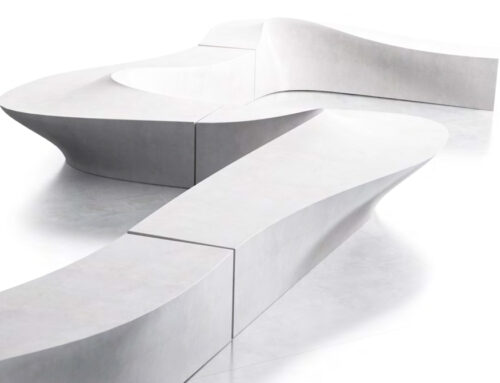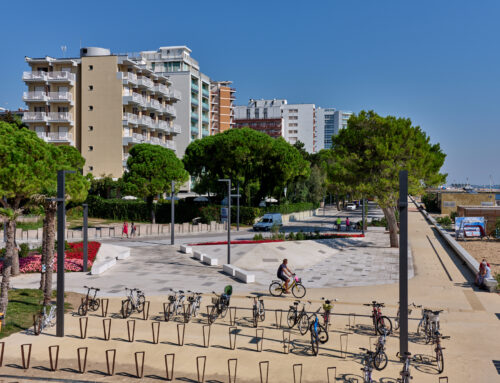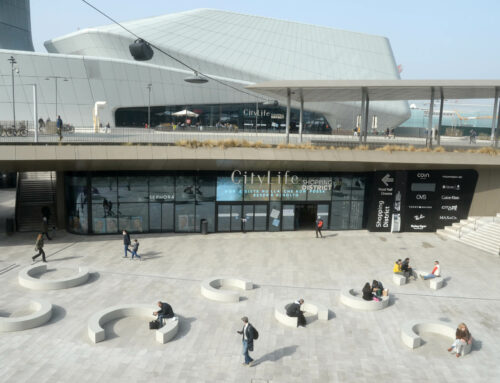In a world where sustainability and the quality of urban life are increasingly central themes, it is essential to discover again the value of elements that contribute to the collective wellbeing and aesthetics of our cities.
Among these, drinking fountains are a true pillar of urban design, often taken for granted but in reality steeped in history, functionality and deep social significance.
Walking through the streets of Rome, in the historic squares of Florence, along the bustling streets of Milan or in the parks of any small Italian town, the discreet but reassuring presence of a drinking fountain is a constant.
They are not simply water points, but authentic oases of refreshment, landmarks for residents and tourists alike.
From the classic Roman “nasone” to the most modern and minimalist design, each drinking fountain tells a part of the history of the place where it is located, reflecting architectural styles, technological innovations and the attention of a community towards its public spaces.
But what makes drinking fountains so important? Let’s see it together.
The small fountain: history, design and functionality
Small fountains are a specific type of fountain, generally smaller in size, designed for a more practical and direct use, i.e. the supply of water for drinking.
Unlike large monumental fountains, which may have more decorative and scenic purposes, drinking fountains are distinguished by their accessibility and functionality.
The history of drinking fountains is ancient, dating back to the first civilisations that built aqueducts to bring water to cities.
Over the centuries, their shape and design have evolved, reflecting architectural styles and technological innovations.
Today, there are different types of drinking fountains, varying in design, materials and delivery mechanisms (e.g. push-button, continuous jet or foot pedal).
The most common are column, wall or ground fountains, often made of durable materials such as cast iron, stone, stainless steel or bronze, chosen for their resistance to wear, weathering and vandalism.
But what is the role of a drinking fountain in street furniture?
The role of drinking fountains in urban design
The primary function of a drinking fountain, of course, is to provide drinking water.
In an urban context, this translates into an essential service for residents, workers and tourists, offering an accessible and free refreshment point.
Think of the importance of a drinking fountain on a hot summer’s day or for those exercising outdoors, allowing them to quench their thirst without resorting to plastic bottles, thus also promoting a more sustainable approach.
In addition to their practical function, fountains and drinking fountains play no less important additional roles:
- are a point of social aggregation.
Often located in strategic places, they become meeting and resting points, facilitating interaction between people.
- Aesthetic and decorative element.
They contribute to embellishing squares, streets and gardens, adding a touch of art and design to the urban landscape and enhancing the surroundings.
- Cultural and historical symbol.
Many fountains are true monuments, witnesses of past eras and guardians of local histories and traditions, becoming identity landmarks for the community.
But who is behind the design of these important elements of street furniture?
Who designs drinking fountains?
The design of drinking fountains is a multidisciplinary process, involving several professionals, each with a specific role in creating a functional, aesthetically pleasing element integrated into the urban context.
Generally, the design is entrusted to:
- Landscape architects.
Specialists in the design of outdoor spaces, they integrate fountains within larger contexts such as parks, public gardens or squares, taking care of the harmony with nature and the surrounding environment.
- Architects .
They may be involved in the design of urban fountains, particularly those with a strong architectural value.
- Industrial designers.
For more modern and serial fountains, the contribution of industrial designers is fundamental in defining the aesthetics, ergonomics, ease of use and manufacturability of the product, balancing form and function.
- Artists and sculptors.
In the case of monumental or artistic fountains, the design can be handled directly by artists who create functional works of art, turning the fountain into a focal point of creative expression.
- Hydraulic engineers.
Regardless of the design, the technical and plant engineering part is always taken care of by specialised engineers, guaranteeing efficiency, sustainability and compliance with health regulations.
These professionals are joined by companies specialising in street furniture that turn ideas into reality, such as LAB23.
This company is dedicated to the design and production of street furniture elements that combine design, innovation and functionality, offering solutions that enhance public spaces.
Among their proposals, you can find different types of drinking fountains, including specific models of drinking fountains that represent examples of contemporary design and attention to quality, such as the Pure drinking fountain or the Drop drinking fountain.
LAB23 Pure fountain
The Pure fountain consists of a sheet steel structure. The nickel-plated brass tap is of the push button type with normally closed return spring.
The structure is fixed with four screws to be inserted on diameter holes. The basin is made of sheet steel and is equipped with a drainage hole and
LAB23 Drop fountain
The Drop fountain is made of a rectangular sheet steel structure. The nickel-plated brass tap is of the push-button type with normally closed return spring.
Above the basin there is a drain, which can be removed to allow the basin to be cleaned.
The future of drinking fountains in urban design sees an increasing focus on innovation and sustainability. New technologies allow the development of “smart” drinking fountains, equipped with sensors to monitor water quality, consumption meters or charging systems for mobile devices.
The use of recycled or low-impact materials are trends that aim to make these increasingly sustainable.
Maintenance, a crucial aspect in ensuring healthy water, is increasingly supported by digital systems that allow quick and effective intervention, ensuring that drinking fountains remain a reliable point of reference for all.
The drinking fountains are an example of how design and functionality can come together to improve the quality of urban life, contributing to the well-being of citizens and aesthetics of public spaces.
If you are interested in discovering innovative and high quality solutions for street furniture including fountains with a modern and functional design, please visit LAB23’s website to explore their product range.






